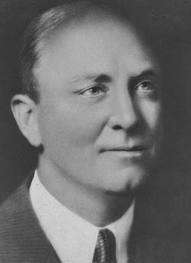New South Wales state election, 1941
| | ||||||||||||||||||||||||||||||||||||||||||||
| ||||||||||||||||||||||||||||||||||||||||||||
| ||||||||||||||||||||||||||||||||||||||||||||
|
| ||||||||||||||||||||||||||||||||||||||||||||
| Legislative Assembly after the election | ||||||||||||||||||||||||||||||||||||||||||||
| ||||||||||||||||||||||||||||||||||||||||||||
The 1941 New South Wales state election was held on 10 May 1941. This election was for all of the 90 seats in the 33rd New South Wales Legislative Assembly and was conducted in single-member constituencies with compulsory preferential voting.
Background
The replacement of Jack Lang by William McKell as leader of the Labor Party in 1939 reunited and rejuvenated the party. A small number of Labor party members continued to support the far left wing State Labor Party (Hughes-Evans) but this had minimal impact on the election results. The party moved away from Lang's populist, inflationary policies, which were seen as extremist by many voters in the middle ground of the political spectrum. McKell also improved the party's standing in rural electorates by personally selecting locally well-known candidates.
By contrast, the internal party divisions and lack of policy direction affecting the United Australia Party (UAP) had resulted in Alexander Mair replacing Bertram Stevens as leader of the UAP and Premier in August 1939. The problems continued in the period prior to the election and throughout the course of the new parliament. These divisions were reflected federally in the forced resignation of Robert Menzies as the Prime Minister in August 1941, and the UAP disintegrated at a state level in 1943. The remnants of the UAP combined with the newly formed Commonwealth Party to form the Democratic Party in that year. Mair remained Leader of the Opposition until 10 February 1944 when he was replaced by Reginald Weaver.
The result of the election was a landslide victory for the Labor Party:
- Australian Labor Party 54 seats
- Independent Labor 1 seat
- United Australia Party 14 seats
- Independent UAP 5 seats
- Country Party 12 seats
- Independent 4 seats.
The Labor Party government of McKell had a majority of 18 and McKell remained Premier throughout the term of the Parliament. The Labor Party won two further seats from the Country Party at by-elections during the parliament. Jack Lang was expelled from the Labor Party in 1943, having persistently attacked the governments of McKell and Australian Prime minister John Curtin. Lang remained in parliament as the sole representative of Lang Labor.
Key dates
| Date | Event |
|---|---|
| 18 April 1941 | The Legislative Assembly was dissolved, and writs were issued by the Governor to proceed with an election. |
| 22 April 1941 | Nominations for candidates for the election closed at noon. |
| 10 May 1941 | Polling day. |
| 17 June 1941 | Last day for the writs to be returned and the results formally declared. |
| 28 May 1941 | Opening of 33rd Parliament. |
Results
|
New South Wales state election, 10 May 1941 | ||||||
|---|---|---|---|---|---|---|
| Enrolled voters | 1,684,781[1] | |||||
| Votes cast | 1,389,896 | Turnout | 92.52 | −3.27 | ||
| Informal votes | 35,858 | Informal | 2.52 | −0.13 | ||
| Summary of votes by party | ||||||
| Party | Primary votes | % | Swing | Seats | Change | |
| Labor | 706,014 | 50.80 | +15.98 | 54 | + 26 | |
| United Australia | 281,982 | 20.29 | –15.57 | 14 | –23 | |
| Country | 153,639 | 11.05 | –2.81 | 12 | –10 | |
| State Labor | 78,363 | 5.64 | +5.64 | 0 | ±0 | |
| Independent UAP | 45,195 | 3.25 | +3.25 | 5 | +5 | |
| Independent Labor | 29,677 | 2.14 | +2.14 | 1 | +1 | |
| New Social Order | 8,906 | 0.64 | +0.64 | 0 | ±0 | |
| Independent Coalition | 925 | 0.07 | +0.07 | 0 | ±0 | |
| Independent | 85,195 | 6.13 | –4.75 | 4 | +3 | |
| Total | 1,389,896 | 90 | ||||
- 1 There were 1,540,974 enrolled voters in contested electorates and 143,807 were enrolled in 7 uncontested electorates (four UAP and three Labor).
References
- "Former members of the New South Wales Parliament, 1856-2006". New South Wales Parliament. Retrieved 2009-01-11.
- Antony Green. "NSW Elections Analysis". New South Wales Parliament. Retrieved 12 January 2009.
- Nairn, Bede (1995). Jack Lang the 'Big Fella': Jack Lang and the Australian Labor Party 1891-1949. Melbourne: Melbourne University Press. ISBN 9780522843293.
See also
- Members of the New South Wales Legislative Assembly, 1941–1944
- Candidates of the New South Wales state election, 1941


